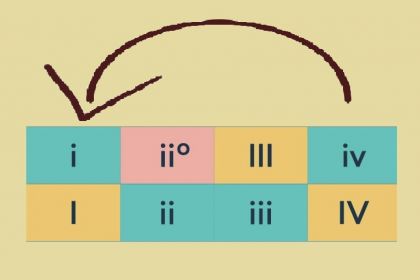Music Theory
Dorian mode in Pink Floyd songs

Fillmore West CD cover
It is no secret that accurately applying classical theory in songwriting contributes to easy song memorization as well as long-term popularity. This fact is confirmed by the musical output of iconic bands like The Beatles, Pink Floyd, and Led Zeppelin. They composed more than half of their tracks using six diatonic modes: Ionian, Aeolian, Dorian, Phrygian, Lydian, and Mixolydian.
If you're seeking a distinct sound for your minor song, consider exploring the Dorian diatonic mode. Implementing Dorian chord progressions can invigorate a somewhat cliched Aeolian mode while still maintaining the minor vibe in your composition.
The key feature of the Dorian mode is the major subdominant chord rooted in the fourth scale degree. Its use in combination with a tonic chord gives the plagal cadence an assertive major mood. Additionally, the supertonic minor chord rooted in the second scale degree provides more flexibility than the diminished supertonic chord in the Aeolian mode. For more information about the harmonic structure of the Dorian mode, you can read our article on 5 songs featuring Dorian mode.
To appreciate the unique sound of the Dorian mode, take a look at the harmonic analysis of all six Pink Floyd songs containing Dorian chord progressions.
One of the simplest examples of a Dorian chord progression shows One Of These Days. In the harmonic analysis of the song chord chains, the scale degrees (denoted with Roman numerals) show the following two-chord progression in B Dorian: Bm–A or i–VII. Note that the structure of the Bm tonic and the A subtonic chords is identical in the Dorian and Aeolian modes. Thus, the track can be equally assigned to both of these modes.
Listen to One Of These Days by Pink Floyd:
The verses of Breathe exploit the two-chord alternation often referred to as a plagal cadence: Em–A7 or i–IV7. The unique mood of the Dorian mode is distinctly felt in this combination of chords.
Listen to Pink Floyd's Breathe:
The same pattern is observed in Any Colour You Like, where the plagal cadence accompanies the entire track except for the final modulation: Dm–G or i–IV.
Listen to Any Colour You Like by Pink Floyd:
The looping i-IV plagal cadence is also found in the iconic Another Brick In The Wall. A distinct variety to the track is added by the three-chord chain III–VII–i. Read the detailed harmonic analysis of the song in the article on 5 songs featuring Dorian mode.
Is There Anybody Out There? features the three-chord Dorian progression containing a plagal cadence in its final section: Am–C–G–Am or i–III–IV–i. The main narration of the track takes place against the background of variations of the Am tonic chord and several appearances of the F mediant chord rooted in the sixth scale degree. This part of the song should be attributed to the Aeolian mode since the Dorian mode provides a diminished mediant chord.
Listen to Is There Anybody Out There? by Pink Floyd:
Wearing the Inside Out is accompanied by a Dorian progression—combining the minor tonic chord with all three major chords of the mode—during its verses: Cm–E♭–B♭–F or i–III–VII–IV. This technique brings a palpable major sound to the song section.
In the choruses, there is a looped repetition of dominant and subdominant chords: Gm–F or v–IV. This trick generates a lot of tension and creates the listener's expectation of harmonic resolution, which occurs through the tonic chord opening the next verse.
Listen to Wearing the Inside Out by Pink Floyd:
Explore how Pink Floyd uses other musical modes:
- Phrygian mode in Pink Floyd songs
- Lost for Words: Pink Floyd's only Lydian song
- Mixolydian mode in Pink Floyd songs
Discover more songs composed in Dorian minor mode and check out their harmonic analysis in the following articles:
- 5 songs featuring Dorian mode
- Beatles songs with Dorian mode
- Dorian mode in The Doors songs
- Dorian mode in Led Zeppelin songs
- Knights of Cydonia: Dorian-mode refrain boosting best Muse song
- El Farsante and 7 more songs by Ozuna in Dorian and Aeolian modes



